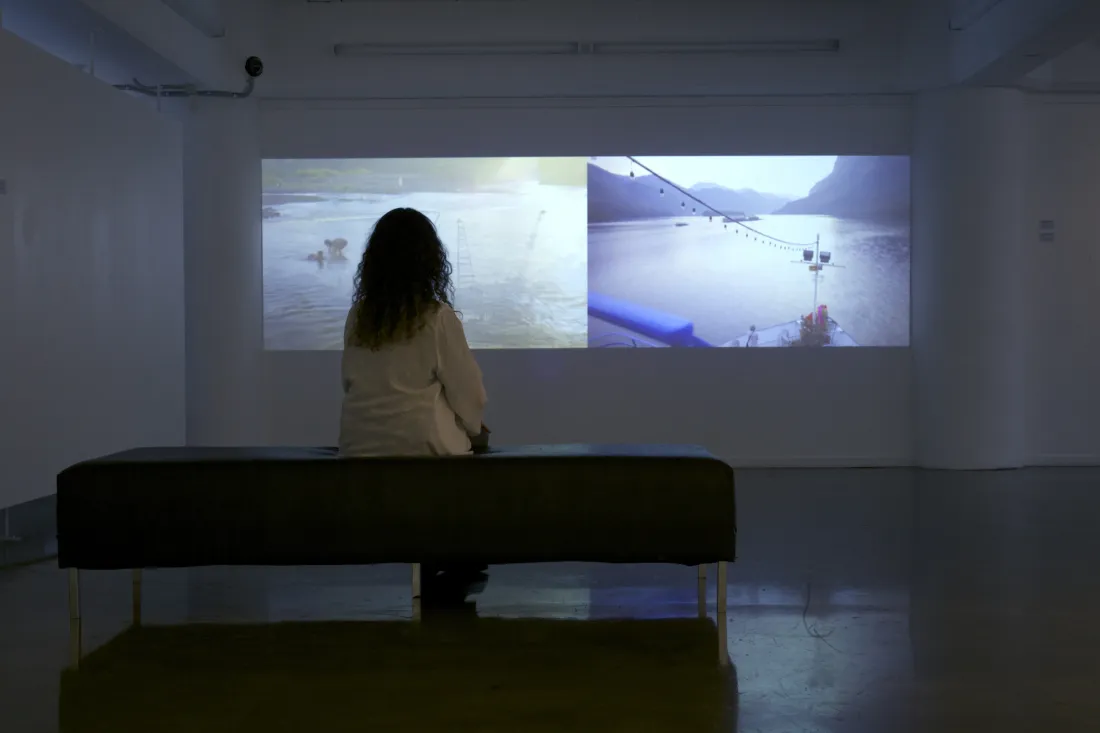Everything is not alright
Written by


Not long after the Paris bombings an artwork kept flashing in my mind when I closed my eyes. It was at Toi Poneke in Wellington this month - a video of bullet cases falling in the dark, radiating light. Off-screen the sharp clear sound of the cases clattering to the floor, like metallic raindrops.
The work is by Thai artist in residence in Wellington Sutthirat Supaparinya. As Supaparinya explained to me (for a podcast for Circuit), the work was created in response to the armed crackdown on protests in the wake of the military coup that has taken control of Thailand’s government. The work expresses the feeling of lack of control in the enveloping blackness out the train window between her home city Chiang Mai and Bangkok. Bullets in the darkness.
It was in the wake of Paris I got a sense of the work’s power. The fear of not knowing when danger might come. Supaparinya’s exhibition Steal This Book at Toi Poneke felt a little undercooked and thrown together, much as you might expect from an artist who’d only recently arrived in the country, but it did have something New Zealand work only ocassionally has – an active engagement with political responsibilities as a citizen.
The title Steal This Book is that of American activist Abbie Hoffman’s famous 1971 book, which ironically Supaparinya has never read. She provided slips of paper with a weblink to a PDF of it (it can be read without stealing here).
Hoffman’s book has one of the great opening paragraphs: “It's perhaps fitting that I write this introduction in jail - that graduate school of survival. Here you learn how to use toothpaste as glue, fashion a shiv out of a spoon and build intricate communication networks. Here too, you learn the only rehabilitation possible - hatred of oppression.”
In another light move Supaparinya bound banned books in rubber bands, so you couldn’t open them and placed them on the wall – ‘banned books’. More interesting was her own introductory statement, on self-censorship. She noted how Chinese artists have actively self-censored themselves to enable their work to gain traction in the booming Chinese art market. The work can be political but its not stated as being such. Given the Thai government’s crack down, it was also interesting to contemplate how much Supaparinya’s work was itself self-censored to ensure safe passage.
Censorship is one thing (this exhibition raised the recent example of Ted Dawe’s Into the River being banned here). But are New Zealand artists guilty of self-censorship? We are all of course to a degree. But perhaps another word for it in New Zealand is mildness. I don’t think there’s any fear of consequences, but I do think there is hesitation over the market’s interest in the political as serious, complex work. Certainly, in a year of hearty discussion of flags, refugee quotas, TTPA, terrorism and the commemoration of war there’s been remarkable silence across the arts. Pity.
Leafing through the pages of the latest issue of Art News the most overt political statement is in the bright coloured neon letters that now adorn the façade of the about to be reopened Christchurch Art Gallery: ‘Everything is Going to Be Alright’. A work by British artist Martin Creed, it packs a provocative punch, especially when coming from a prosperous visiting Brit. Clearly everything isn’t, and what are you going to do about it?
The most fascinating social media outbreak this year had nothing to do with rugby (I have images now of Peter McLeavey and Colin McCahon as helicopter co-pilots up in the big sky) but the divide between those who showed their support for France with the French flag over their Facebook profile pictures and those like me - muttering of the dangers of flag-waving and Lebanon, the West Bank and Nigeria - who did not.
I was reminded of another recent exhibition, photographer and self-declared humanitarian Stuart Robertson’s recent Pataka exhibition and book Peace in 10,000 Hands. In a move reminiscent of what John and Yoko might have concocted, Robertson’s simple ongoing action to promote peace is to travel the world photographing people gently holding a white rose. It’s a lovely gesture and Robertson a strong photographer but as exhibition (rather than social media campaign) I found there was far too much of Robertson, the agency of celebrity endorsement and aesthetic gloss in the way. Endless stylish images of people holding a rose reduces things to a postage stamp.
The celebrity factor is of course a smart popular move. Demi Moore, Oscar Kightley, Ricky Jervais, the Dalai Lama, all giving their moment of meditative stillness. Daryl Hannah in the surf: “I arrived in Malibu to photograph Daryl and we headed to the beach together.
There’s also Trigger, an LA man head slightly crumpled over, head to toe in tats, photographed before a grafittied wall. The image is presented in a lightbox with lurid alternating pinks and greens. From Soho to Haight Ashbury and onto a rose placed on a table in Shackleton’s Antarctic hut, there’s a lot of globe-trotting photographer predictability.
Across from the Pataka galleries outside the library they are screening for free on rotate Ai Weiwei’s film Never Sorry. Alongside there’s a BMW parked up where you can drop your lego through the sunroof to donate to Ai Weiwei’s Australian project (opening National gallery of Victoria 11 December), after the Danish company refused to sell him pieces in bulk. The fact you can't open the doors of this symbol of prestige disturbs me, and I think that might be a good thing. Lego's refusal to work with the project was something the artist denounced as “an act of censorship and discrimination.” A very nice counterpoint.